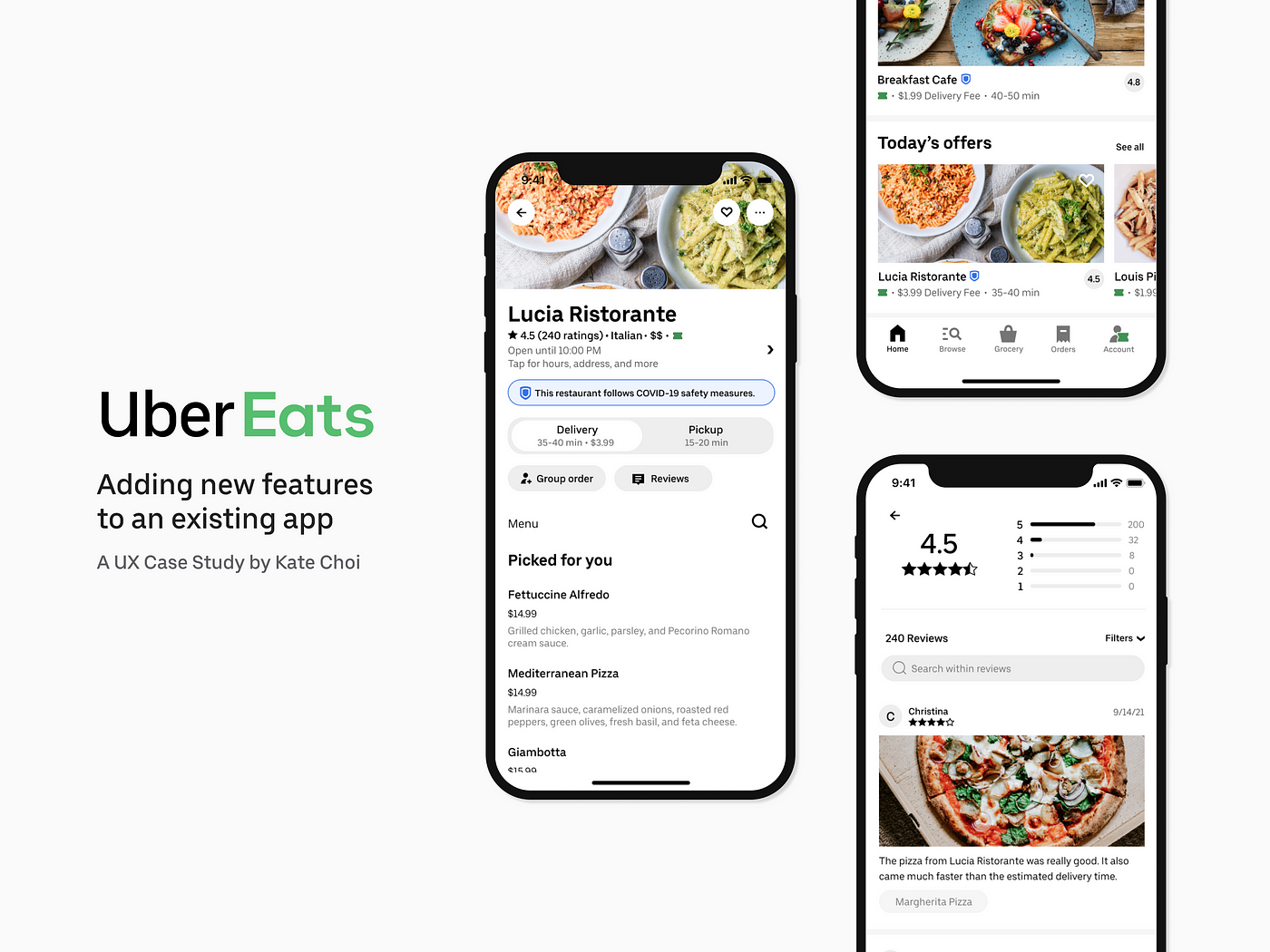When it comes to ordering food online, there are many options. One of the most popular ones is Uber Eats, a service offered by Uber that enables users to order food from their favorite local restaurants and have it delivered directly to their doorstep. However, a common complaint among users is that Uber Eats is too expensive. This is because the prices charged for the delivery can often exceed the cost of the food itself. In this article, we will explore the reasons behind the high prices of Uber Eats and why it may not be as simple as one might think.

Why is Uber Eats so Expensive?
Uber Eats is expensive because it has higher delivery and service fees than competitors. Additionally, Uber Eats has an additional $3 fee for small orders less than $15 and a $2 fee for small orders less than $10. As a result, Uber Eats markup can be 56% for product delivery that costs $14.
Let’s assume that we have one meal that costs $14. Here is the practical comparison Table Uber Eats with competitors:
| Cost | Restaurant | Grubhub | DoorDash | Postmates | Uber Eats |
|---|---|---|---|---|---|
| Product | $14.00 | $14.00 | $14.00 | $14.00 | $14.00 |
| Delivery fee | 0 | $1.99 | $1.99 | $2.99 | $3.99 |
| Service fee | 0 | $1.29 | $1.20 | $2.42 | $2.22 |
| Sales tax | $0.70 | $1.20 | $1.29 | $1.33 | $1.26 |
| Misc. | 0 | 0 | 0 | 0 | $3 |
| Total cost | $14.70 | $18.48 | $18.48 | $20.74 | $24.47 |
| Percentage difference | 5% | 16% | 28% | 39% | 56% |
As we can see from the table, the cost of ordering an identical product from the same restaurant varies significantly depending on the food delivery service used. So, let’s explore the costs of these services and how they contribute to the total cost.
Product Cost The product cost is the price of the food item(s) the customer orders. In this example, the product cost is $14.00, regardless of the delivery service used.
Delivery Fee: The delivery fee is the amount the delivery service charges for delivering the food to the customer’s location. In this example, Grubhub and DoorDash charge a delivery fee of $1.99, Postmates charges $2.99, and Uber Eats charges $3.99. Interestingly, the restaurant itself does not charge a delivery fee.
Service Fee: The service fee is the amount the delivery service charges for its platform and service. This fee can vary depending on the delivery service used. In this example, Grubhub charges a service fee of $1.29, DoorDash charges $1.20, Postmates charges $2.42, and Uber Eats charges $2.22. Again, the restaurant itself does not charge a service fee.
Sales Tax Sales tax is a tax on the sale of goods and services. In this example, sales tax is charged by both the restaurant and the delivery service. The amount of sales tax charged varies depending on the delivery service used. For example, Grubhub charges $1.20, DoorDash charges $1.29, Postmates charges $1.33, and Uber Eats charges $1.26.
Miscellaneous Fees Some delivery services may also charge additional fees, such as a small order fee or a busy pricing fee. In this example, only Uber Eats charges a miscellaneous fee of $3.00.
Total Cost The total cost is the sum of all the costs associated with the delivery service. In this example, the total cost of ordering the identical product from the same restaurant ranges from $14.70 (when ordering directly from the restaurant) to $24.47 (when using Uber Eats). This represents a percentage difference of up to 56% between the delivery services.
Reasons why Uber Eats may be more expensive compared to other food delivery services:
- Uber Eats charges a flat $3 fee for orders less than $15, which can significantly increase the total cost of the order.
- Uber Eats has higher delivery fees compared to other food delivery services. For example, in the table provided, Uber Eats charges $3.99 for delivery, while Grubhub and DoorDash only charge $1.99.
- Uber Eats also has higher service fees than other food delivery services. For example, in the table provided, Uber Eats charges a service fee of $2.22, while DoorDash charges only $1.20.
- Unlike some other food delivery services, Uber Eats may also charge miscellaneous fees for specific orders, such as a busy pricing fee or a small order fee, which can further increase the total cost of the order.
- Additionally, Uber Eats may have fewer promotions or discounts than other food delivery services, which can also contribute to its higher overall cost.
The first factor to consider when evaluating the cost of Uber Eats is that the company is a third-party provider. This means they do not own the restaurants or food they deliver. Instead, they partner with local restaurants and charge a fehaveliver their food to customers. This fee is split between Uber Eats and the restaurant, with the former taking a significant chunk of the revenue. In some cases, the fee can be as high as 30% of the cost of the food, which inevitably results in higher prices for the consumers.
Another factor to consider is the cost of delivery. Uber Eats employs a vast network of drivers who deliver food to customers. However, these drivers expect to be paid for their time, and the company has to cover their expenses, such as gas and maintenance costs. Moreover, with the COVID-19 pandemic, the delivery cost has increased significantly as drivers now have to take extra precautions and follow safety guidelines while delivering food. This has naturally translated to higher fees for customers.
Additionally, the surge pricing model used by Uber Eats has contributed to the high prices of the service. When demand for food delivery is high, the company can increase the delivery fees, meaning customers must pay more for their food. This model is designed to incentivize more drivers to join the platform during peak times and thus guarantee faster delivery times. However, it can be frustrating for customers to pay more for the same significantlycially when the cost of the food itself has not changed.
Finally, it is worth considering the overall cost of using Uber Eats. Customers who use the platform frequently may be subject to additional fees such as subscriptions or small order fees. These costs can quickly add up, further increasing the service’s overall cost.
In conclusion, while Uber Eats may be convenient for users, it’s costly. The high prices charged for food delivery can be attributed to several factors, including the fact that the company is a third-party provider, the cost of delivery, the surge pricing model, and additional fees. While these costs are not ideal for customers, they are often necessary to maintain the sustainability of the service. Ultimately, whether or not Uber Eats is worth the high cost depends on the individual user’s priorities and budget.
- Does Eating Spicy Chips Burn Calories? - November 10, 2023
- How Do They Make Spicy Chips in Factories? - October 27, 2023
- What Foods Cause Kidney Stones? - October 3, 2023
